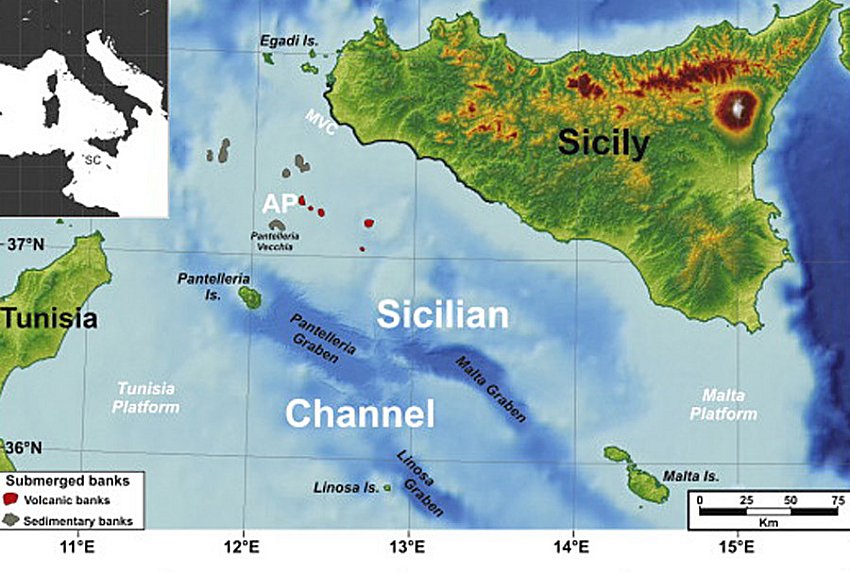MessageToEagle.com – A massive monolith over 10,000-years old has been discovered in the Mediterranean Sea near Italy. The block, which was apparently constructed by humans, bears traces of prehistoric civilization, ‘ researchers say in their paper.
The 12-meter-long monolith “resting on the sea-floor” was located at a depth of 40 meters, in a shallow bank of the Sicilian Channel.
“It is broken into two parts, and has three regular holes: one at its end which passes through from part to part, the others in two of its sides.”
According to the study, the site was abandoned at about 9,350 ± 200 years BP (Before Present) and the morphological evidence, underwater observations and results of petrographic analysis suggest that the monolith was made by humans.

The scientists say the block was ‘cut and extracted as a single stone from the outer rectilinear ridge’ which was about 300 meters to the south, “and then transported and possibly erected.
‘This discovery provides evidence for a significant Mesolithic human activity in the Sicilian Channel region.’
‘From the size of the monolith, we may presume that it weighs about 15 tons,’ the study says, adding that its function hasn’t been specified yet.
The prehistoric people were able to build the monolith as there was no sea where the Sicilian Channel is now. But then the ancient geography of the Mediterranean Basin was profoundly changed by the increase in sea level following the Last Glacial Maximum, says the study.
“This global event has led to the retreat of the coastlines, especially in lowland areas and shallow shelves, such as the Sicilian Channel.”
The scientists say that the idea that human ancestors once lived at the sea-floor of modern seas “easily fascinates and attracts our imagination” as an extensive archaeological record of early settlements still remains on the sea-floor of our continental shelves.
“Almost everything that we do know about prehistoric cultures derives from settlements that are now on land, and that were tens to hundreds of kilometers distant from the coastline when they were occupied.”
The age of the monolith dates back to the beginning of Mesolithic era (about 10,000 to 5,000 BC) and the report says that the discovery may “significantly expand our knowledge of the earliest civilizations in the Mediterranean basin and our views on technological innovation and development achieved by the Mesolithic inhabitants.”
The scientists noted that the monolith, made of a single, large block, required a cutting, extraction, transportation and installation, which undoubtedly reveals “important technical skills and great engineering.”
The study calls to abandon the belief that our ancestors lacked the knowledge, skill and technology to exploit marine resources or make sea crossings.
“The recent findings of submerged archaeology have definitively removed the idea of ‘technological primitivism’ often attributed to hunter-gatherer coastal settlers.”
The most famous archeological discovery of Mesolithic age is the monumental temple complex of Göbekli Tepe in southeastern Turkey. The complex, which was excavated by a German archaeological team in the 1960s, was constructed about 11,600 years BP.
The exact purpose of the site is yet unknown. However, the scientists suggest it was a religious center or sanctuary.
© MessageToEagle.com







